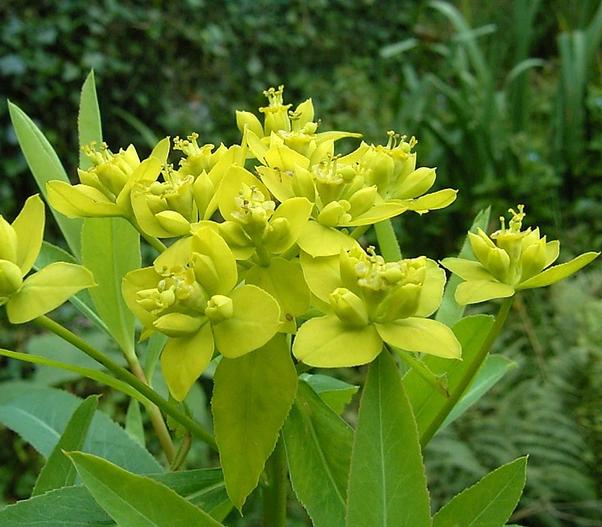Zeravshan Spurge
(Euphorbia sarawschanica)
Zeravshan Spurge (Euphorbia sarawschanica)
/
/

Frank Vincentz
CC BY-SA 3.0
Image By:
Frank Vincentz
Recorded By:
Copyright:
CC BY-SA 3.0
Copyright Notice:
Photo by: Frank Vincentz | License Type: CC BY-SA 3.0 | License URL: http://creativecommons.org/licenses/by-sa/3.0/ | Uploader: Ies | Publisher: Wikipedia Commons






Estimated Native Range
Summary
Euphorbia sarawschanica, commonly known as Zeravshan spurge, is a clumping, deciduous herbaceous plant native to rocky slopes and screes in the mountainous regions of Central Asia, including areas such as Tajikistan and Uzbekistan. It typically grows to a height of 12-18 inches (30-45 cm) and spreads to about the same width. The plant features narrow, blue-green leaves and bears greenish-yellow cyathia (false flowers) in late spring to early summer, which are attractive to pollinators. The cyathia give way to small, three-lobed seed capsules that may add additional interest in the garden.
Zeravshan spurge is valued for its drought tolerance and its ability to thrive in poor, well-drained soils, making it suitable for rock gardens, xeriscaping, and as a ground cover in sunny, dry areas. It is also recommended for its ecological benefits, such as attracting pollinators and fitting well into naturalistic plantings. While it requires minimal maintenance, gardeners should handle the plant with care due to its toxic, milky sap, which can cause skin irritation and should not be ingested. It is best grown in full sun to part shade and is relatively free of serious pests and diseases. However, it can be susceptible to root rot if kept in poorly drained soils.CC BY-SA 4.0
Zeravshan spurge is valued for its drought tolerance and its ability to thrive in poor, well-drained soils, making it suitable for rock gardens, xeriscaping, and as a ground cover in sunny, dry areas. It is also recommended for its ecological benefits, such as attracting pollinators and fitting well into naturalistic plantings. While it requires minimal maintenance, gardeners should handle the plant with care due to its toxic, milky sap, which can cause skin irritation and should not be ingested. It is best grown in full sun to part shade and is relatively free of serious pests and diseases. However, it can be susceptible to root rot if kept in poorly drained soils.CC BY-SA 4.0
Plant Description
- Plant Type: Herb
- Height: 1.5-2 feet
- Width: 1.5-2 feet
- Growth Rate: Moderate
- Flower Color: Yellow
- Flowering Season: Summer
- Leaf Retention: Deciduous
Growth Requirements
- Sun: Full Sun
- Water: Low
- Drainage: Fast
Common Uses
Border Plant, Drought Tolerant, Low Maintenance, Rock Garden
Natural Habitat
Rocky slopes and screes in the mountainous regions of Central Asia
Other Names
Common Names:
Scientific Names: , Euphorbia sarawschanica, Tithymalus zeravschanicus,
GBIF Accepted Name: